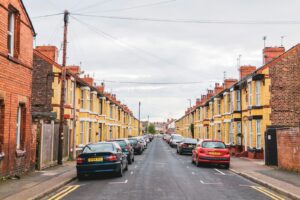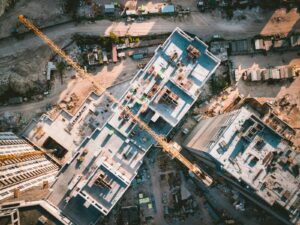How can the gentrification of east London benefit all?
 How much of the regeneration money that has been poured into east London is being shared with its existing population? How can its gentrification benefit all?
How much of the regeneration money that has been poured into east London is being shared with its existing population? How can its gentrification benefit all?
These are questions that were asked almost thirty years ago as the glittering towers of Canary Wharf were being erected. And they are being asked again today as east London assesses the impact of regeneration on the area and attempts to shore up an Olympic legacy.
New Start’s East London: Ten Years of Change event, which took place at Community Links on 4th March, attempted to answer these questions. As Labour MP of Bethnal Green and Bow Rushanara Ali pointed out, only a small percentage of her constituents now work in Canary Wharf and its towers have become symbols of growing inequality. How can we avoid the mistakes of the past and ensure that the current wave of regeneration is more equitable?
Recent census data shows the level of growth and demographic change in the area in the last ten years. Tom Smith from OCSI talked through the headlines. A 20% growth in the population of east London, fuelled by young people (44% increase) and minority populations (67% increase). In total, 66% of neighbourhoods are now majority BME. The private rented sector has doubled in ten years and more than a quarter of households are now overcrowded. East London has one-third of the deprived neighbourhoods which also have the highest levels of degrees.
While the influx of young educated people has boosted skills levels in the area, the existing population are doing less well. Local people are missing out on local jobs and the wrong types of houses are being built. The entrepreneurial energy of the area – which has the highest number of start-ups in the UK – is not being tapped. Undoubtedly many things are changing for the better but the force of raw economics is in many cases working in opposition to the needs of people and communities, and the Olympic legacy has so far not lived up to its promises.
The key message is that change needs to work with the grain of communities, not against it. It’s a message that accompanies all large scale regeneration and the story of east London could be the story of change anywhere. So what are the solutions? Richard Brown from the London Legacy Development Corporation said that the corporation’s aim is to equip people with the skills and capacities to gentrify from within. Jess Steele from Locality set out her vision for ‘self-renovating neighbourhoods’, which offers a more organic pace of change than previous waves of regeneration, which she describes as ‘laissez faire’, ‘tidy up’ and ‘neo-liberal wipe-out’. And Geraldine Blake, the chief executive of Community Links, called for greater responsibility at all levels.
‘If we lose the chance to do things differently things will get worse. We need to find ways to bring people together and motivate them, keep the circles as wide as possible, and understand that “we” are all “we”‘.
Here’s some practical solutions and ideas from the day, aimed at ensuring the next ten years of change in east London benefit the many rather than the few:
- COLLABORATE BETTER. Build small civic groups bringing businesses, residents and the public and social sectors together e.g. Chatsworth Road Neighbourhood Forum
- Be ACTIVISTS FOR MORE SOCIAL HOUSING as a bulwark against the forces of the global economy
- CREATE SELF-RENOVATING NEIGHBOURHOODS in which local people lead and manage initiatives using mutual self-interest as the driver. Such neighbourhoods unlock the tapped resources in people’s skills, in land and buildings and regenerate ‘one patch at a time’.
- REJECT AND SUBVERT THE NEO-LIBERAL REGENERATION AGENDA
- KEEP PRESSURE ON AGENCIES to ensure jobs are made available to local people.
- CREATE A NARRATIVE FOR THE AREA. What’s Canning Town going to be? If we don’t decide, the developers will decide for us.
- INVEST IN AND DEFEND LOCAL SERVICES.
- BE COMFORTABLE WORKING WITH RESIDENTS. Talk to people about what they love about where they live. Understand what people have and hold onto that.
And here’s some more thoughts from speakers and delegates at the event:















